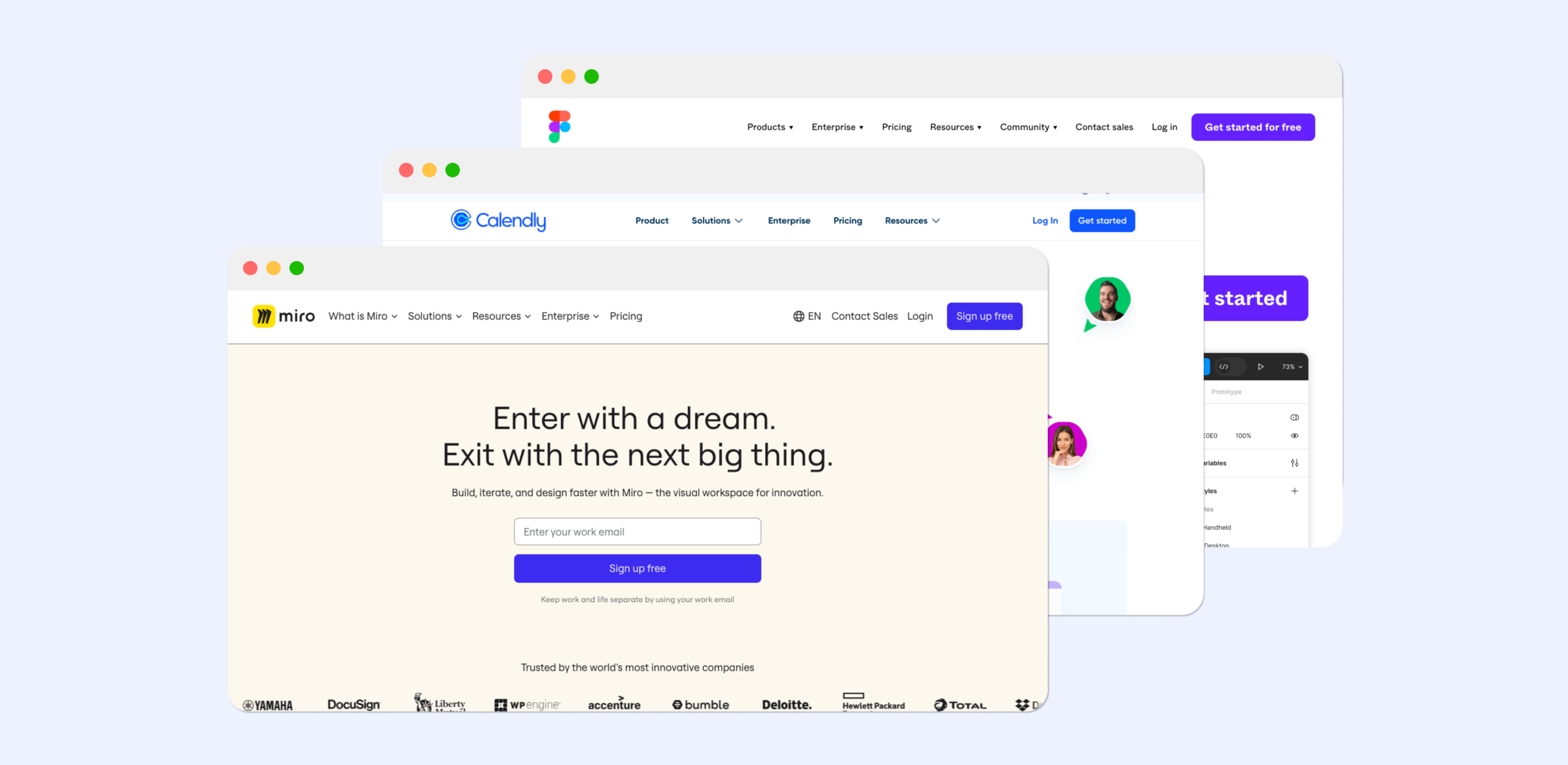Product-led growth is not just a strategy for most companies anymore, it’s a whole business model. SaaS companies that are seeking ways for revenue growth are adoption a product-led growth strategy non-stop.
I want to share 10 companies with successful PLG mindset. Their methods can help your SaaS achieve quicker success in your market strategy.
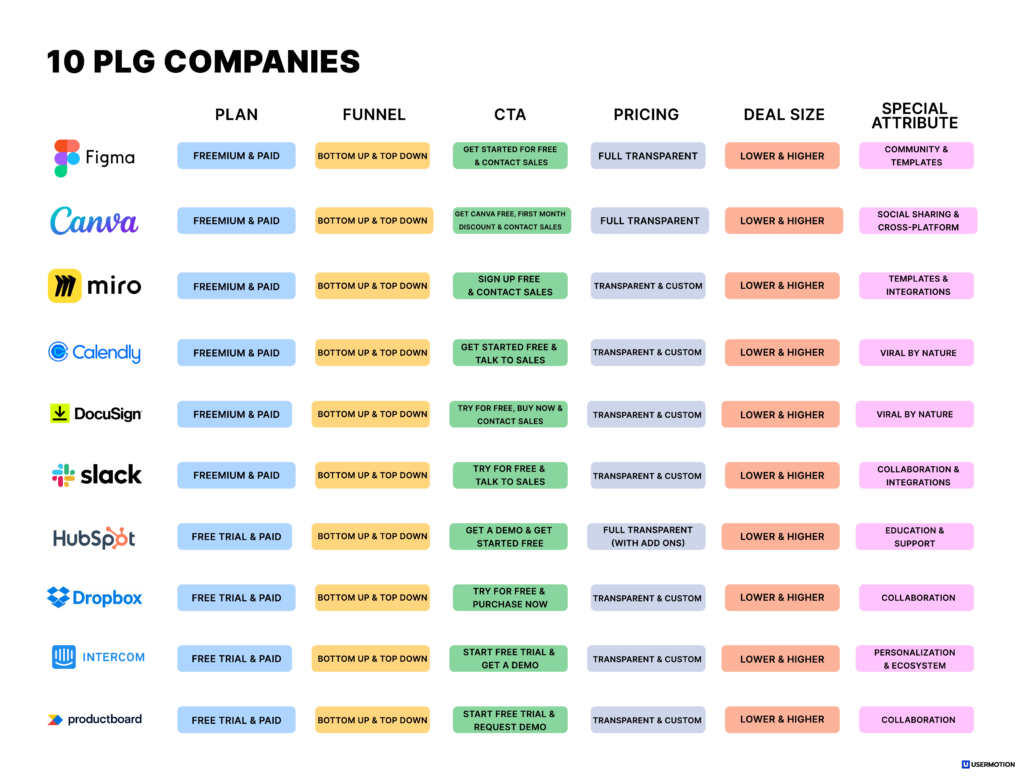
TL;DR
- Product-led growth (PLG) companies focus on building compelling products that users love, triggering organic growth rather than relying solely on sales and marketing.
- PLG is gaining momentum, especially in the WFH era, solving immediate needs for users.
- Key PLG Companies by Sector:
- Design: Figma and Canva focus on real-time collaboration and ease of use.
- Productivity: Miro, Calendly, and DocuSign provide instant utility and are inherently viral.
- B2B: Slack, HubSpot, and Dropbox have generous free tiers and foster collaboration.
- PLG Enablers: Intercom and UserGuiding help businesses with customer interaction and onboarding, serving as indispensable add-ons.
- Successful PLG companies offer immediate value, have freemium models, and capitalize on virality.
What Are Product-led Growth (PLG) Companies?
A product-led growth company is one where the product itself is the star. These companies focus on creating something so irresistible that it naturally draws people in, rather than just using sales teams or big marketing campaigns.
Imagine you find a cool app that lets you doodle on a virtual whiteboard with your team. It’s so useful and fun that you can’t help but tell your friends and coworkers about it. Soon, you’re all using it, and maybe even upgrading to get more features.
The aim for these companies is to make their product so user-friendly and awesome that people not only use it regularly but also recommend it to others. This starts a chain reaction where new users keep bringing in more users, and the popularity just keeps growing.
The key is to quickly show users the “Aha!” moment where they see how the product can make their life or work so much better. Once they love it, they’re more likely to stay and even pay for extra features. It’s like giving a taste of an amazing cookie, making you want the whole jar!
10 PLG Companies Who Are Nailing It
Design Companies
Both companies have embedded virality and sharing into the very fabric of their user experience, which is a PLG home run. Whether it’s through collaboration or sheer ease of use, Figma and Canva offer enough upfront value to get users hooked and talking.
1. Figma
Quick Facts
What It Is: Figma is a cloud-based design tool that allows for real-time collaboration among designers.
Who Uses It: Anyone from freelance designers to large design teams in big enterprises.
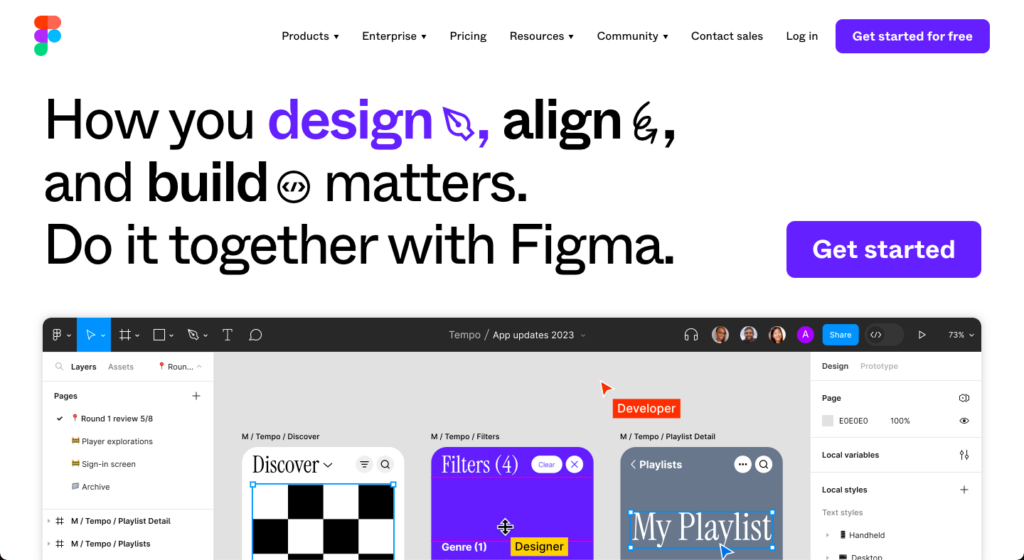
Why PLG Works For Figma
Collaboration Is King: Figma’s real-time collaboration is its ace. When designers can instantly share their work and feedback loops are shortened, you’re not just using a design tool; you’re part of a design ecosystem.
Freemium Goodness: Figma isn’t shy about giving away a robust free version of their platform. This gets folks in the door, playing around with the tool, and likely sharing it with teammates.
Community & Templates: Figma has a community where users share templates and design assets. This not only provides immediate value but also creates a sense of belonging.
Plug and Play: The platform allows various plugins that extend its functionality. The more you use it, the more indispensable it becomes.
What to Learn from Figma
The more “shareable” and “collaborative” your product is, the quicker it can grow. Also, a strong community can be a goldmine for user retention and engagement.
2. Canva
Quick Facts
What It Is: Canva is an online graphic design tool that democratizes design with drag-and-drop features and a multitude of templates.
Who Uses It: Pretty much everyone—from students creating presentations to small businesses crafting social media posts.
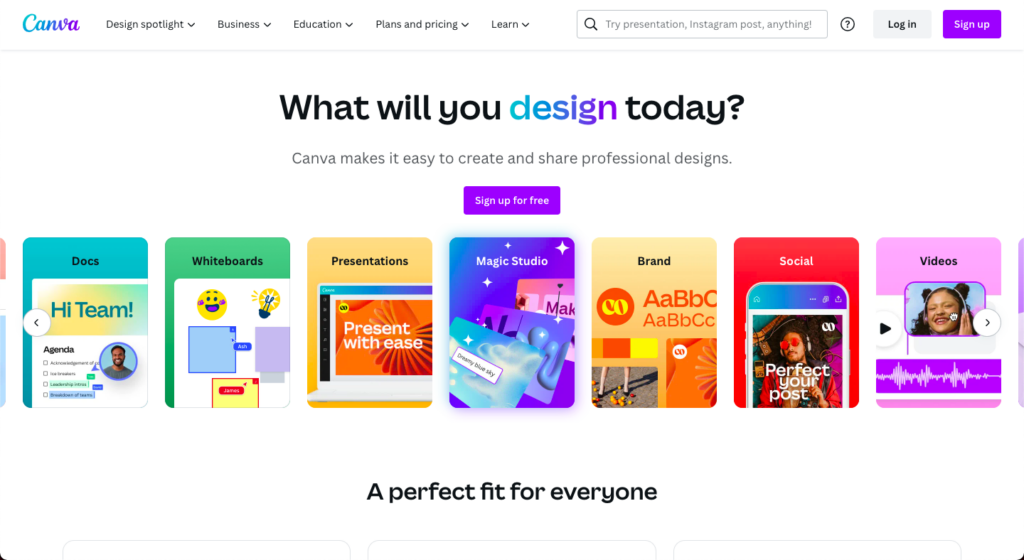
Why PLG Works For Canva
Simplicity for the Win: Canva is incredibly user-friendly. You don’t have to be a design wizard to come up with something that looks professional.
Freebies Galore: Canva offers a ton of free templates, elements, and even some stock images. This encourages users to dive right into creating, offering a ‘taste’ that often leads to wanting the ‘whole meal’—the premium version.
Social Sharing: Canva cleverly allows you to share your designs directly to social media platforms. Each shared design subtly markets Canva.
Cross-Platform: Available on the web and mobile, which encourages usage on the go and therefore, more frequent interaction with the tool.
What to Learn from Canva
Lowering the barrier to entry can bring in a wave of users who might have been intimidated otherwise. Plus, if you can offer real value right off the bat with a free version, you’re onto something good.
Productivity Companies
All three of these productivity tools leverage core PLG principles—immediate utility, freemium models, and inherent virality—to grow their user base and convert free users to paid plans. They solve real, everyday problems in an elegant way that encourages users to bring others into the fold.
3. Miro
Quick Facts
What It Is: Miro is an online whiteboard tool that enables collaborative planning, brainstorming, and more.
Who Uses It: Product teams, marketers, consultants, and even educators.
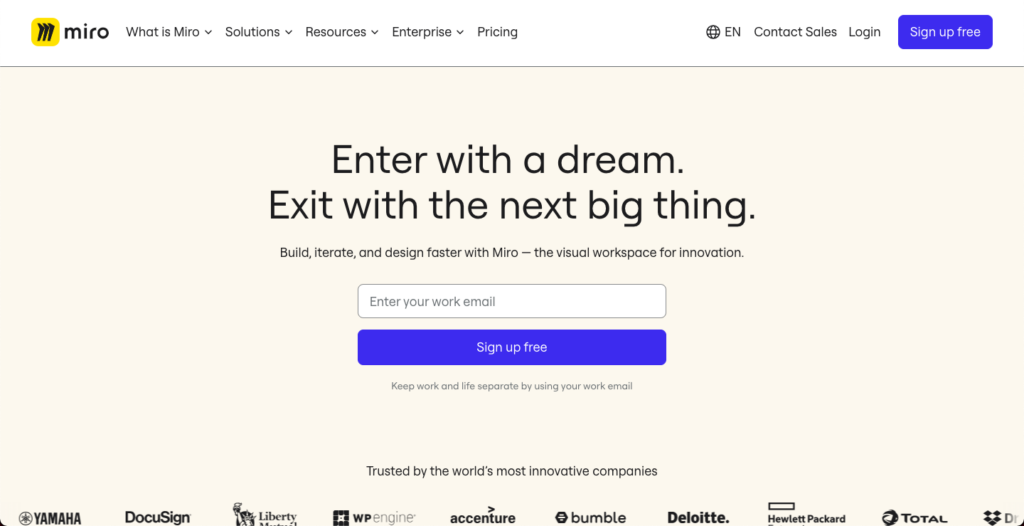
Why PLG Works For Miro
Immediate Gratification: Miro lets you start scribbling on a digital whiteboard right away. Instant engagement? Check.
Templates: Need a SWOT analysis board? Or a Scrum planning board? Miro has templates that help new users dive right in.
Freemium: Miro offers a free version that is quite generous, giving teams a taste of the platform before they decide to go all in.
Integrations: It can sync up with other tools you’re already using like Slack, Google Drive, and Asana, making it easy to integrate into existing workflows.
What to Learn from Miro
Immediate utility and a taste of the product’s capabilities can turn new users into lifelong customers. Make your product sticky by integrating it with other essential tools.
4. Calendly
Quick Facts
What It Is: Calendly is a scheduling software that syncs with your calendar to automate meeting arrangements.
Who Uses It: Professionals, salespeople, recruiters, and pretty much anyone who hates the “when are you free?” back-and-forth.
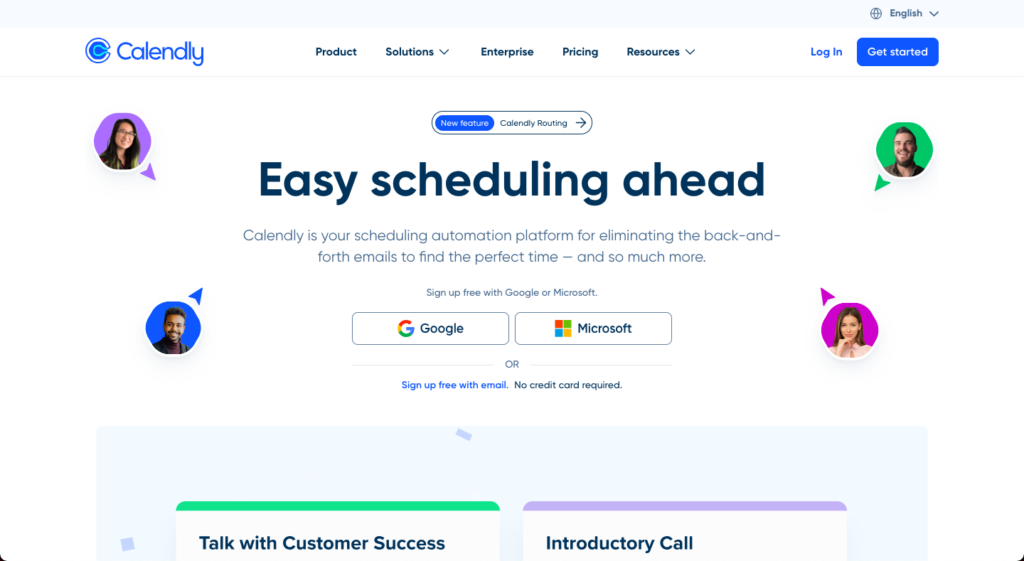
Why PLG Works For Calendly
Solves Annoying Problem: Calendly tackles the universally loathed issue of scheduling ping-pong.
Viral By Nature: When you schedule a meeting using Calendly, the person on the other end gets introduced to the tool—often leading them to become users themselves.
Flexible Plans: Free plans for basic needs and affordable pricing for more advanced features.
What to Learn from Calendly
If your product naturally exposes itself to non-users during regular usage (like when sharing a scheduling link), you’ve got a powerful growth loop.
5. DocuSign
Quick Facts
What It Is: DocuSign is a platform that allows you to send, sign, and store agreements and approvals digitally.
Who Uses It: Businesses, freelancers, basically anyone who needs a signature.
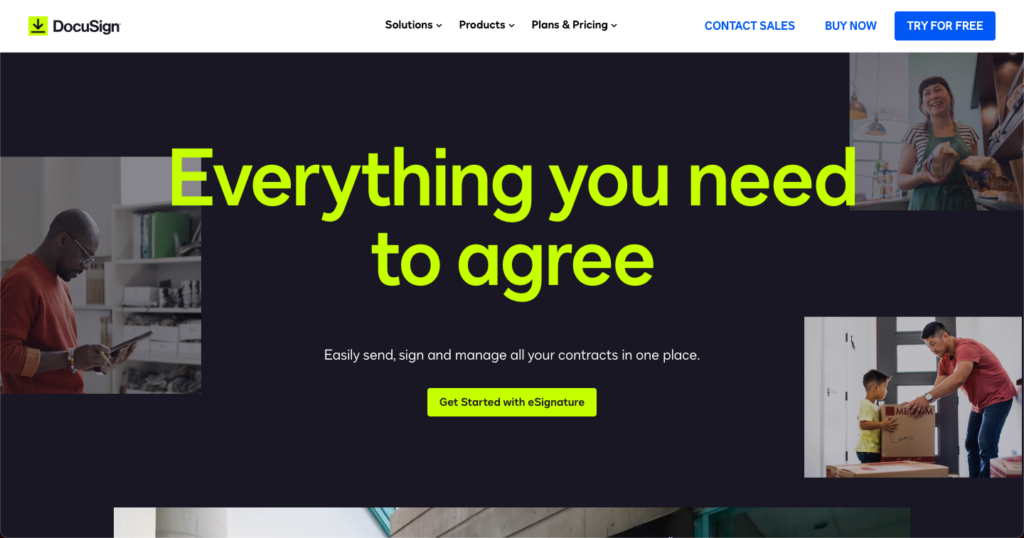
Why PLG Works For DocuSign
Essential Service: DocuSign replaces the hassle of printing, signing, and scanning documents. Once you use it, you wonder how you lived without it.
Network Effect: Like Calendly, every time you send a document for signature, the recipient gets exposed to DocuSign, potentially expanding its user base.
Trust & Security: High levels of security make it an easy sell for corporate clients, enhancing its viral growth within organizations.
What to Learn from DocuSign
Solve a simple yet significant problem in a way that naturally gets your product in front of new potential users, and you’ve got a recipe for PLG success.
B2B Companies
Each of these B2B giants has figured out how to deliver immediate value to users while also offering more advanced features for a fee. They’re user-friendly, collaborative, and integrated into the workflow, making them hard to ditch once you start using them. Basically, they’ve turned their products into necessities, and that’s PLG at its finest.
6. Slack
Quick Facts
What It Is: Slack is a real-time messaging platform aimed to improve team communication.
Who Uses It: From startups to Fortune 500 companies, if there’s a team, there’s probably a Slack channel for it.
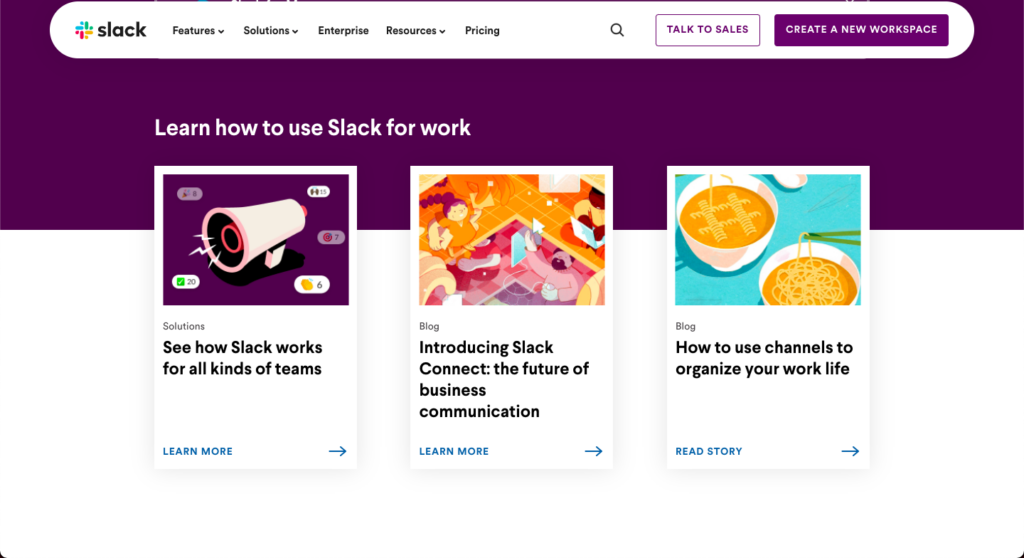
Why PLG Works For Slack
Super User-Friendly: Its interface is clean, intuitive, and easy to use.
Collaboration Central: Like Figma, Slack thrives on real-time collaboration and community-building, providing immense immediate value.
Freemium Model: Their generous free tier gets teams to try before they buy.
Integrations Galore: Slack integrates well with a multitude of other tools, making it almost irresistible to not use.
What to Learn from Slack
If you make your product sticky by being at the center of all workplace activity, you’re golden. Also, a rich ecosystem of integrations can lock users into your platform.
7. HubSpot
Quick Facts
What It Is: HubSpot is an all-in-one marketing, sales, and customer service platform.
Who Uses It: SMEs, marketers, and sales teams who are looking for seamless automation and customer relationship management.
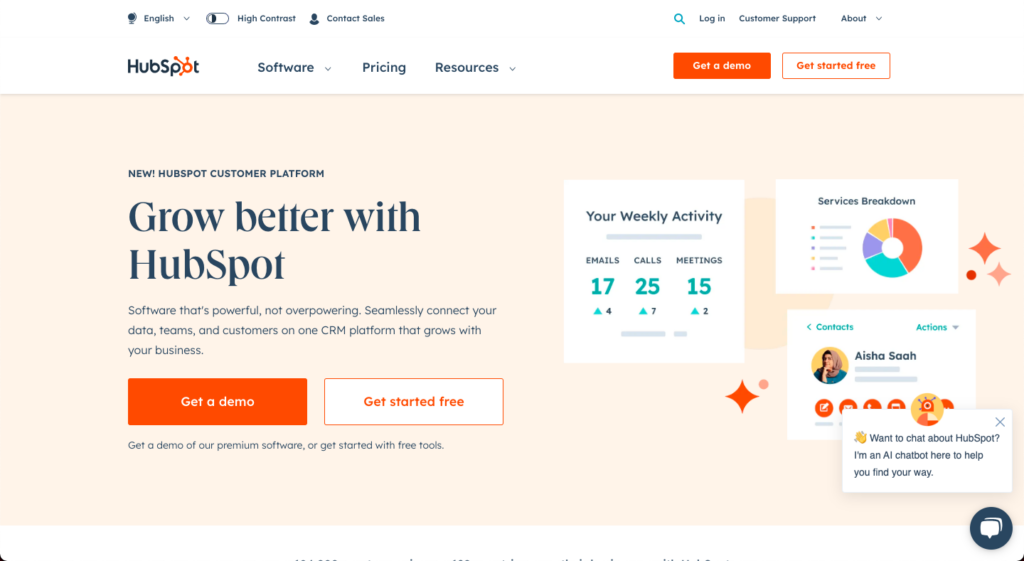
Why PLG Works For HubSpot
Free CRM: HubSpot’s free CRM is not just a teaser; it’s a fully functional tool that provides enough value to get users hooked.
Education and Support: HubSpot Academy and customer support help users get the most out of the platform, encouraging stickiness.
Platform Extensibility: You can add more functionalities as your business grows, making it scalable.
What to Learn from HubSpot
Free can be profitable. Give away something incredibly valuable to get people in the door, then offer more specialized tools as paid features.
8. Dropbox
Quick Facts
What It Is: Dropbox is a cloud storage solution that lets you save files online and sync them to your devices.
Who Uses It: Individuals, freelancers, and enterprises who need to store and share files securely.
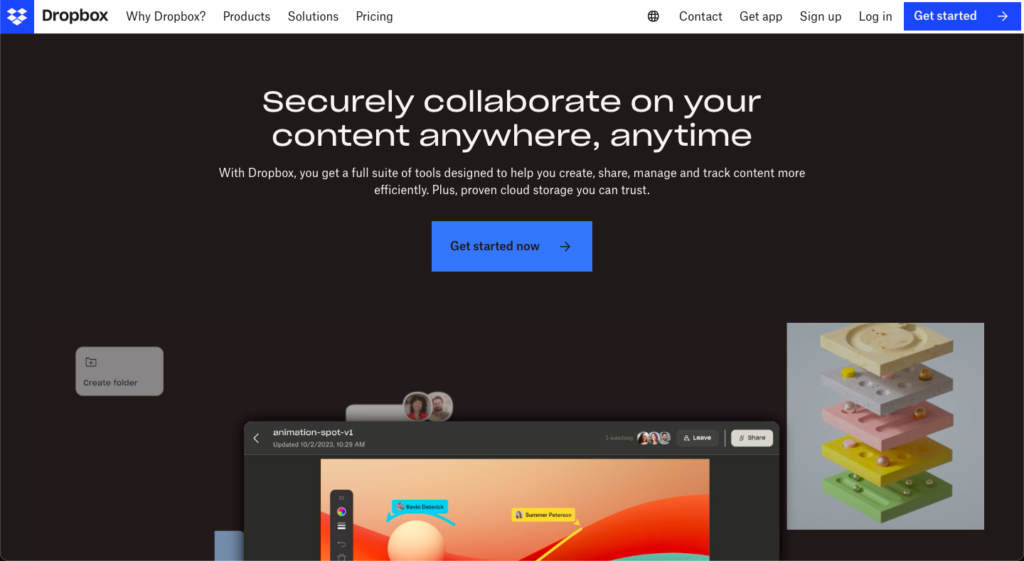
Why PLG Works For Dropbox
Ease of Use: Its drag-and-drop interface couldn’t be simpler.
Freemium Model: Get some free storage space but need more? That’ll be a subscription, please!
Collaboration: Sharing files with teammates or clients naturally exposes them to Dropbox.
What to Learn from Dropbox
Simplicity and utility can trump bells and whistles. Make your product so straightforward and useful that anyone can start getting value out of it immediately.
PLG Enablers
Intercom and UserGuiding enable other businesses to focus on what they do best by taking care of customer interaction and onboarding, respectively. Their success comes from being indispensable add-ons that drive user engagement and satisfaction. They offer immediate value, are easy to implement, and scale with your business. That’s a PLG win-win!
9. Intercom
Quick Facts
What It Is: Intercom is a customer messaging platform that helps businesses connect with customers across their lifecycle.
Who Uses It: SaaS companies, e-commerce businesses, and basically any company that needs to interact with customers online.
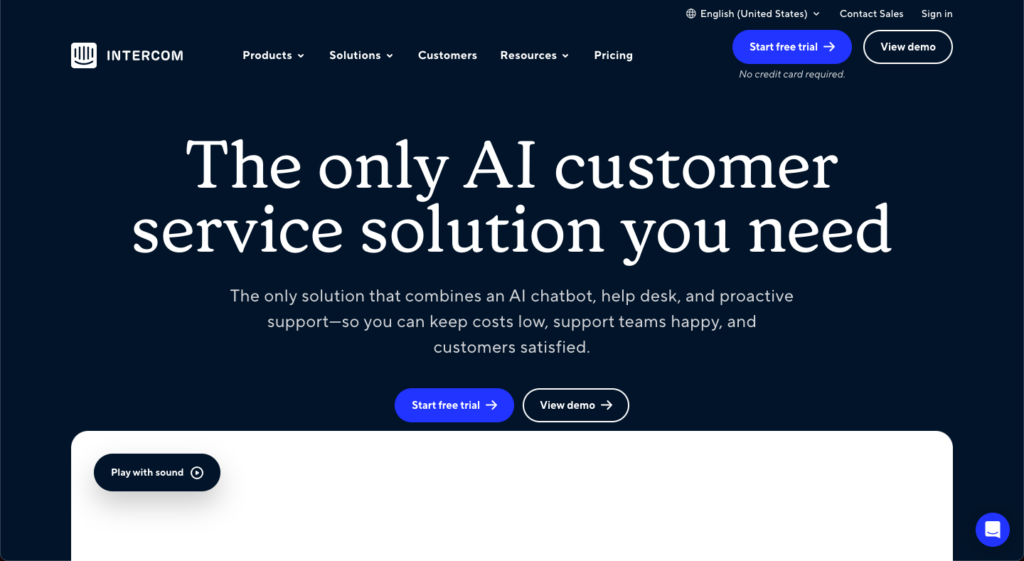
Why PLG Works For Intercom
In-App Interactions: Intercom lives right within your product, offering real-time support and engagement—thus, users get immediate value.
Personalization: Customizable bots and customer segmentation allow for personalized experiences that keep users engaged.
Scaling With Business: From startups to enterprises, Intercom offers tiered solutions, making it easy to start small and grow.
Ecosystem: Intercom’s app marketplace allows for integrations that enhance its capabilities, making it stickier over time.
What to Learn from Intercom
Being directly integrated into your customers’ experience can give you incredible insights and offer immediate value. The more personalized and useful you can be, the better.
10. UserMotion
Quick Facts
What It Is: UserMotion is a predictive lead scoring app that helps SaaS companies to prioritize leads that are most likely to buy, expand or churn, based on product usage and customer fit scores.
Who Uses It: SaaS companies, B2B companies and software companies in general that need to make user and account-level lead prioritization based on ICP and PQL metrics.
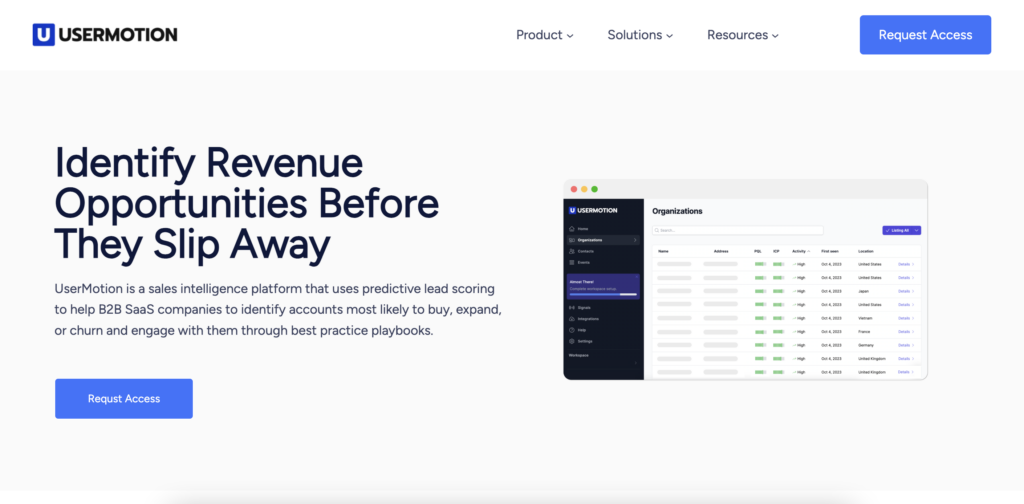
Why PLG Works For UserMotion
The Nature of the Service: UserMotion is naturally designed to support PLG companies that in a need of product data (behaviors, activities, etc.) to prioritize their product-qualified leads. That’s why in its true sense, UserMotion is live in PLG.
Onboarding: It provides short and straightforward onboarding process to adopt users as soon as possible.
Pricing: UserMotion offers transparent pricing and plans for all sizes, from SMBs to enterprises with sales-assist to help users when needed.
Integrations: By its nature, UserMotion needs to be integrated into traditional CRM and customer data tools and data processes. It provides easy integrations between these tools to make it easy to import, export and sync customer data.
What to Learn from UserMotion
Lead identification and prioritization is an inseparable part of product-led sales, that means UserMotion provides an essential part product-led growth, making it easy for PLG companies to get that essential.
PLG Companies In Short
Every product is unique, and not all companies can use every single method to become the best PLG product on the market. All have different sides that come at front:
- Figma
- Canva
- Miro
- Calendly
- DocuSign
- Slack
- Hubspot
- Dropbox
- Intercom
- UserMotion
I hope I was able to help you understand the basics and the critical needs of a product-led company and what makes it successful.
Choose what works for you, and don’t hesitate to change or re-strategize.
What is a PLG company?
PLG company means a company that relies on a product-led growth model to build a product that is self-serve, self-explanatory, and low-touch. PLG companies are highly dependent on product data, product activity, and user experiences to provide value.
What is a PLG SaaS company?
PLG SaaS company is a company that is built on a product-led growth model to operate each side of the business under a product-led mindset. More clearly, this mindset is used by every team in the SaaS company, from marketing to sales, to develop and run a product strategy that is self-serve, self-explanatory, easy to understand, easy to use, and low-touch.
What is PLG strategy?
PLG strategy is a way for GTM teams to use the powers of the product to acquire, convert, and retain users. PLG strategy is most effective for SaaS companies.

